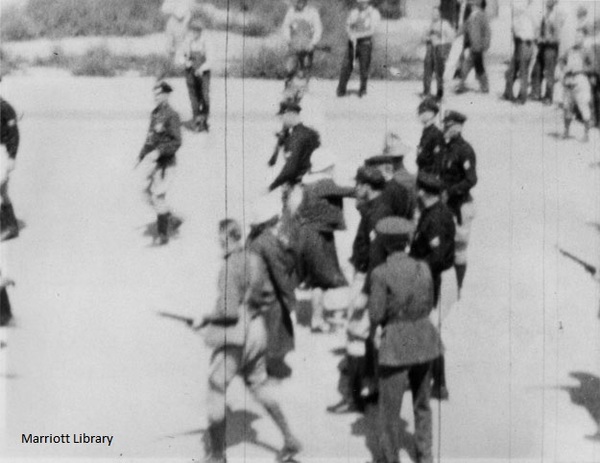Dublin Core
Title
Description
Women have always played a vital role in labor organizing, even if their contributions are not always recognized. In Carbon County in the 1930s, women and girls contributed to the labor effort in ways that were impossible to ignore. The Great Depression devastated rural economies across the country. Coal mines -- which were the foundation of Carbon County’s economy -- began to close. Miners were laid off and evicted from company housing. Hunger was widespread. In response, local miners and their families organized to save their livelihoods.
The radical National Miners Union -- known as the NMU -- arrived in Helper in the spring of 1933. By holding meetings and dances, the union attracted a loyal following, predominantly among Southern Slavic immigrants. By June, a Women’s Auxiliary was established. Sylvia Crouch, wife of an NMU leader, wrote that “wives and sisters of the miners of Carbon County are learning that they must fight side by side with the miners.”
Fearing the militancy of NMU strikers, Carbon County officials formed a paramilitary civilian force. As strikers blockaded their own work sites, the paramilitary force lobbed tear gas bombs and rifle grenades into crowds of men, women, and children. Mass arrests followed, and the paramilitary force violently ransacked homes and boarding houses.
The Women’s Auxiliary responded in kind. That fall, when deputies confronted groups of NMU strikers, they were surprised to find women and girls on the picket line, shouting and jeering along with the men. Many women kept pepper flakes in their purses to throw into the eyes of deputies during confrontations. When the county sheriff tried to shut down a union meeting, one NMU woman pulled him from the crowd and personally escorted him out. When 210 NMU strikers were jailed in bullpens in Price, the Women’s Auxiliary came daily with home-canned fruits, vegetables, and cured meats. At each visit, they berated and cursed the guards.
Arrests of NMU members and their leaders -- along with their extended trials -- effectively broke the union -- although charges against the leaders were eventually dropped. Ultimately, a more moderate union survived, which would prove to be a significant force in Carbon County coal mining for decades to come.
Creator
Source
_______________
See Helen Z. Papanikolas, “Unionism, Communism, and the Great Depression: The Carbon County Coal Strike of 1933,” Utah Historical Quarterly 41 no 3 (1973); Helen Z. Papanikolas, “Utah’s Coal Lands: A Vital Example of How America Became a Great Nation,” Utah Historical Quarterly 43 no 2 (1975); Allan Kent Powell, The Next Time We Strike: Labor in Utah’s Coal Fields 1900-1933 (Logan: Utah State University Press, 1992).

